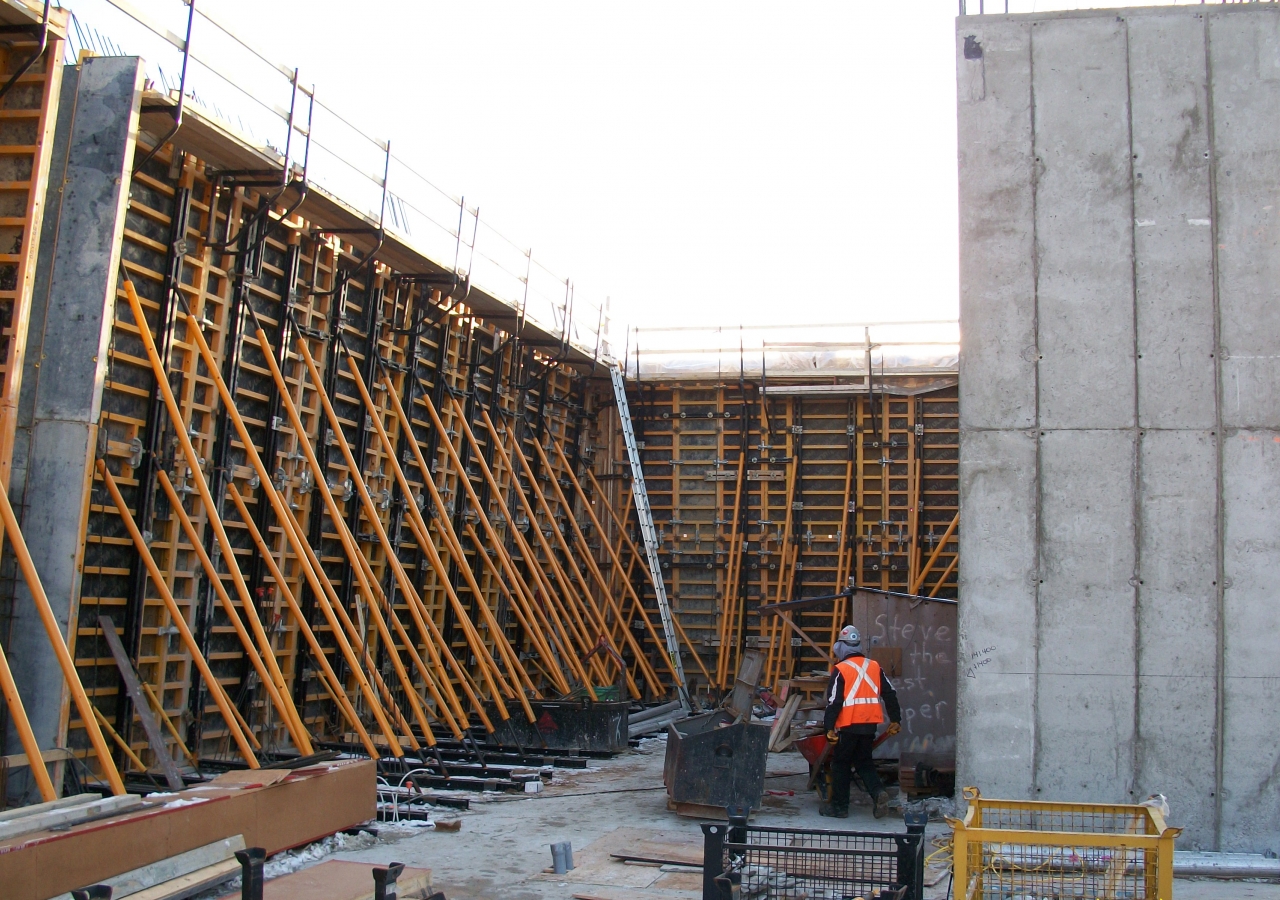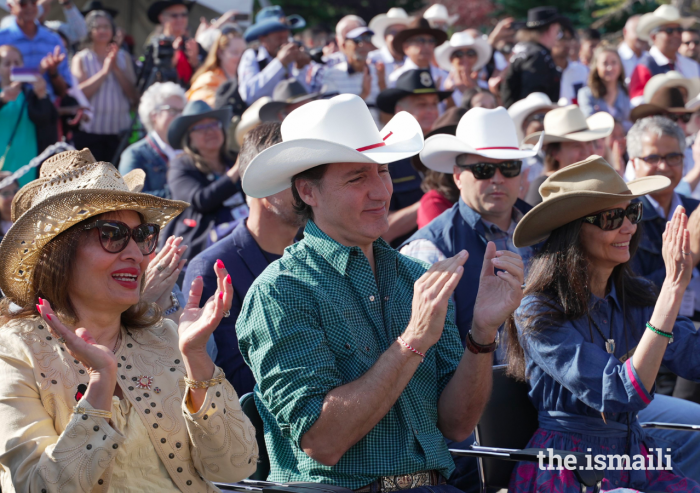Nearly eight months after Mawlana Hazar Imam and Canadian Prime Minister Stephen Harper performed the Foundation Ceremony of the Ismaili Centre, Toronto, the Aga Khan Museum and their Park, Toronto architectural firm, Moriyama & Teshima reports that construction of the Wynford Drive projects is progressing well.
“We can now see the project emerging from the ground,” said Drew Wensley, Executive Vice President of Moriyama & Teshima Planners. “It's truly an exciting time.”
Wensley and others from the firm discussed the progress of the Wynford Drive projects at a seminar held at the Ontario Science Centre on 10 January. Their presentation, which also included a discussion on the firm's work on the Wadi Hanifa Wetlands project in Saudi Arabia – one of the five winners of the most recent cycle of the Aga Khan Award for Architecture – took place against the backdrop of an exhibition of images and architectural renderings of the projects. The exhibition drew some 7 500 visitors over three weeks in late December and early January, including seniors groups and students from the Ontario Al-Azhar programme.
Guests at the seminar included Toronto Mayor Rob Ford, Ontario Minister of Transportation and Don Valley West MPP Kathleen Wynne and City of Toronto councillors Denzil Minnan-Wong, Maria Augimeri, John Parker and David Shiner. They were joined by many friends and partners of the community, who learnt about the progress of the project and the philosophy driving it forward.
“The prayer hall itself is coming out of the ground,” observed Wensley of the Ismaili Centre. “We see the beginnings of the walls and groundwork and by May, the glass roof, which will be the predominant feature of the building, will start to develop.”
Designed by Charles Correa, the Ismaili Centre in Toronto will be the sixth of its kind in the world, and the second in Canada after the Ismaili Centre in British Columbia. An illuminated frosted glass dome will sit on top of the circular prayer hall, and will be accented by a clear glass column that natural light will pass through. In addition to providing space for spiritual contemplation, the Centre will be a venue for programmes and initiatives ranging from lectures and exhibitions, to cultural and social events.
The walls of the Aga Khan Museum have also begun to emerge. Set to open in 2013, the Museum building was designed by Fumihko Maki. It will be the first of its kind, displaying a permanent collection of over 1 000 pieces spanning 1 400 years of Muslim history, including Islamic art and artefacts collected by Mawlana Hazar Imam and his family. It will showcase the rich tapestry of peoples and civilisations that have historically been part of the Muslim world.
“This Museum will be a big draw in a city as diverse as Toronto,” said Karim Sunderji, President of the Ismaili Council for Ontario. “I think that visitors will discover that the pluralism of Canadian society is mirrored in many ways by the plurality of traditions, cultures and interpretations of Islam.”
Michael Brand, consultant to the Aga Khan Museum, remarked that the new institution will engage in research in the history, techniques, and theory of the visual art of Islamic civilisations, as well as related architectural, landscape, musical, and oral traditions, and distribute this knowledge through academic programmes and print and electronic channels.
“The focus of the Museum will be to inspire and engage a 21st century community with the art of Islamic civilisation,” Brand said.
A park will surround and connect the Museum and the Ismaili Centre, and will be open to the public all year round. Designed by Lebanese architect Vladmir Djurovic, it will encompass reflecting pools and draw inspiration from a traditional chahar-bagh garden.
“It's a splendid place and all of its objectives, uniting cultural groups and a place of both contemplation and learning is fabulous,” said Linda Prue, an instructor at the University of Toronto who attended the seminar. “It's great for Toronto and a wonderful way to build bridges between communities.”
George Stockton, President of Moriyama & Teshima Planners, agreed, saying the projects “do things landscape does best, which is connect major new buildings and institutions together and they provide a place for people.”
Stockton also spoke to the success of the Wadi Hanifa Wetlands project in Riyadh, Saudi Arabia, which officially opened last April and received the Aga Khan Award for Architecture in November.
The wadi had suffered extensive environmental degradation, and Moriyama & Teshima were charged with restoring and developing it as an environmental, recreational and tourism resource. Starting in 2001, they introduced landscaping, conservation of the natural environment, the enhancement of agricultural land and the creation of an environmentally sensitive wastewater treatment facility that provided additional water resources for the rural and urban inhabitants of the region. Recreational areas were also developed for the people of Riyadh.
“We had to bring it back to life,” said Stockton. “We had to bring it back to a level of health and we really had to understand how it worked as a result.”
“Now, there's a completely new sociology and culture developing within these Wadi parks and within Wadi Hanifa,” he added.
Similar to the Wadi Hanifa project, the Park in Toronto will also reach out to and transform its community, including spaces for educational programming and offering a place for reflection and relaxation.
“If you look at the combination of these projects – a museum on one side, an Ismaili Centre on the other side, formal gardens in the middle and the Park all around it, this is truly a unique set of projects that come together,” said Mohamed Manji, President of the Ismaili Council for Canada. “These projects contribute to the architectural renaissance of Toronto, and invite dialogue amongst peoples and communities as they strive for peace and common ground.”













